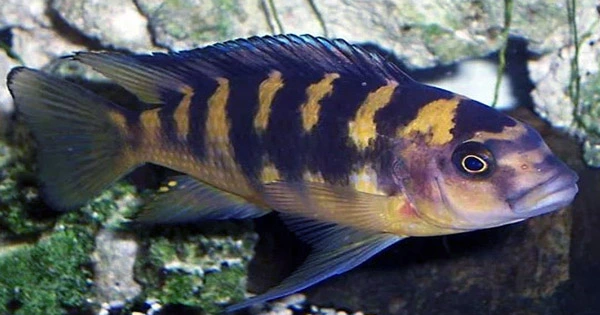The ability to add and subtract numbers has been discovered in zebra mbuna fish and stingrays. The fish were given the challenge of swimming through chambers where they could only get a food incentive if they did their mental math correctly. In recent research published in Scientific Reports, their numerical abilities are described in depth. It indicates that bony fish, zebra mbuna (a species of cichlid), and stingrays (which sit alongside sharks in the elasmobranchs) could add and subtract one from the numbers one to five in order to gain a food reward under experimental settings.
Professor Vera Schluessel of the University of Bonn in Germany led a research team educating fish in numerical skills for a few years. If you’re interested, fish math tutorials go something like this: Fish swim into a chamber that is divided into two halves by two screens. On each panel, the researchers display different information, such as five dots on one and three dots on the other. Fish will select a side to swim through at random and will either be rewarded or not. They eventually learn to link the visual stimuli on the displays to the intended result.
The researchers could make things more challenging once the cichlids and stingrays had mastered the basics. They then utilized a projector to display geometric objects in various hues that served as a query. The hue of the shapes indicated whether the result (displayed on both displays) required one-factor subtraction or addition. For example, if three blue triangles were exhibited, the fishes were hunting for a screen choice that showed four blue triangles.
Because yellow signified a one-to-one subtraction, the right solution to three yellow triangles was two yellow triangles. As the fish gained experience via trial and error, some of them began to understand the numerical tasks that were presented to them, aided by the motivation of a food reward. The cichlids’ brain fuel was dry pellets, but stingrays seem to be more motivated by earthworms, squid, and fish.
Six of the zebra mbuna and three of the stingrays figured out the marine math, getting it right 78 percent of the time in addition activities and 94 percent of the time in subtraction problems, respectively. Both were significantly less consistent with subtraction, getting the correct answer 69 and 89 percent of the time, respectively. The individual variance was seen in both groups, which may surprise non-aquarium visitors more than individuals who are used to dealing with fish in science.
“The majority of people are unaware that fish have personalities,” Schluessel told IFLScience. “Because no two fish are alike, some are exceptional at some skills while others are not. As a result, you have a lot of individual variety.” So far, the test results have been promising, but Schluessel says the team aims to push the study further by making it more difficult. They also aim to continue research on elasmobranchs (such as stingrays), who have had their numerical abilities investigated less thoroughly than bony fish.















